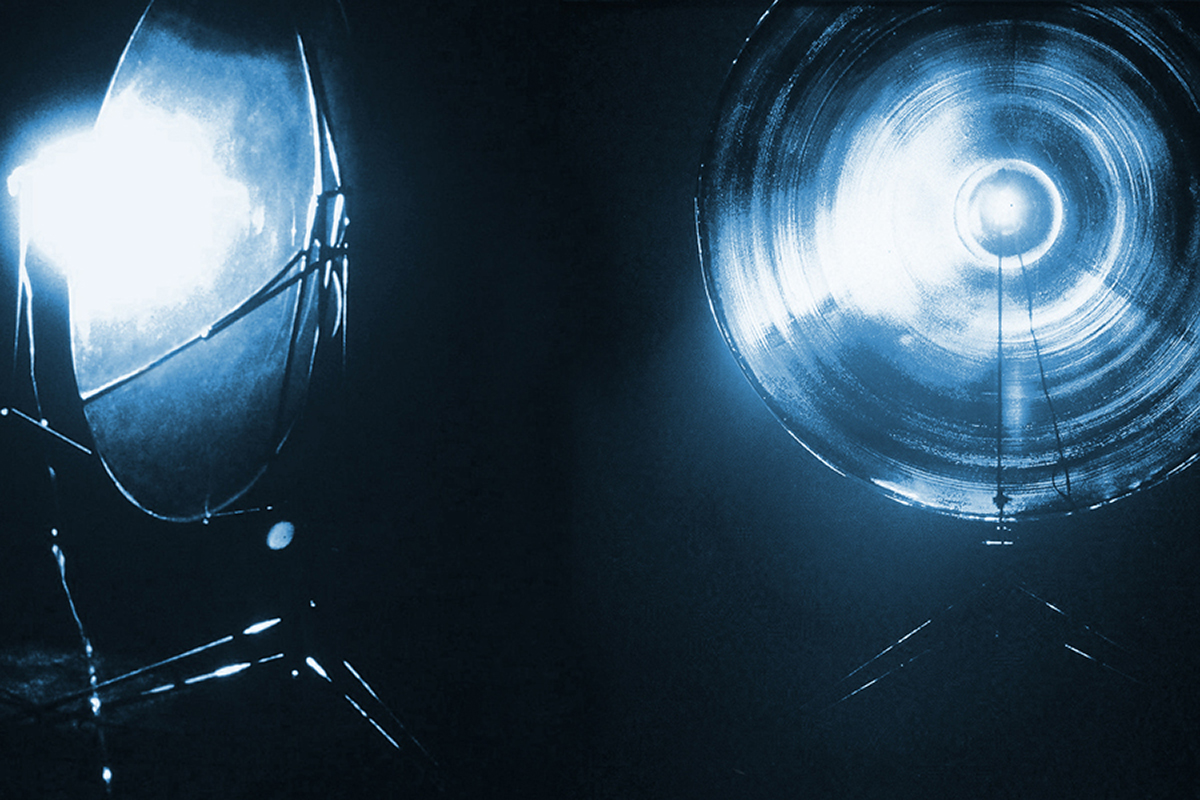
Edited Highlights: The RealTime years
I’d gone to university in my 30s — family man student — and was now into a PhD in Psychiatry (not Clinical). My supervisors used to scrutinise my writing for signs of something interesting and get me to rewrite again and again and again until anything that could in any way engage a reader or indicate human thought was expunged. Old school behaviouralists, as against new school materialists like me.
Then the first call came from RealTime asking if I’d like to review a couple of books themed with AI and neuroscience for their online-only section. I think I wrote about 1500 completely over the top thank-god-for-creative-writing words which were politely returned with a request to cut it to 500. Hooray — not a rejection ?. So I did the cut and from then on, through most of my time as a RealTime writer, I made significant efforts to hit the word count spot on — which I did within a word or two for most of my reviews. I took the word limit as a deliberate constraint, like writing without using the letter “e” (which I could not possibly do, lacking all motivation for such a task, although, in truth, my ridiculous curiosity has a way of driving my working habit toward such goals. Is this a sign of mistrust in individual worth — giving up on a natural flow of words for artificial and binding constraints…who knows?)
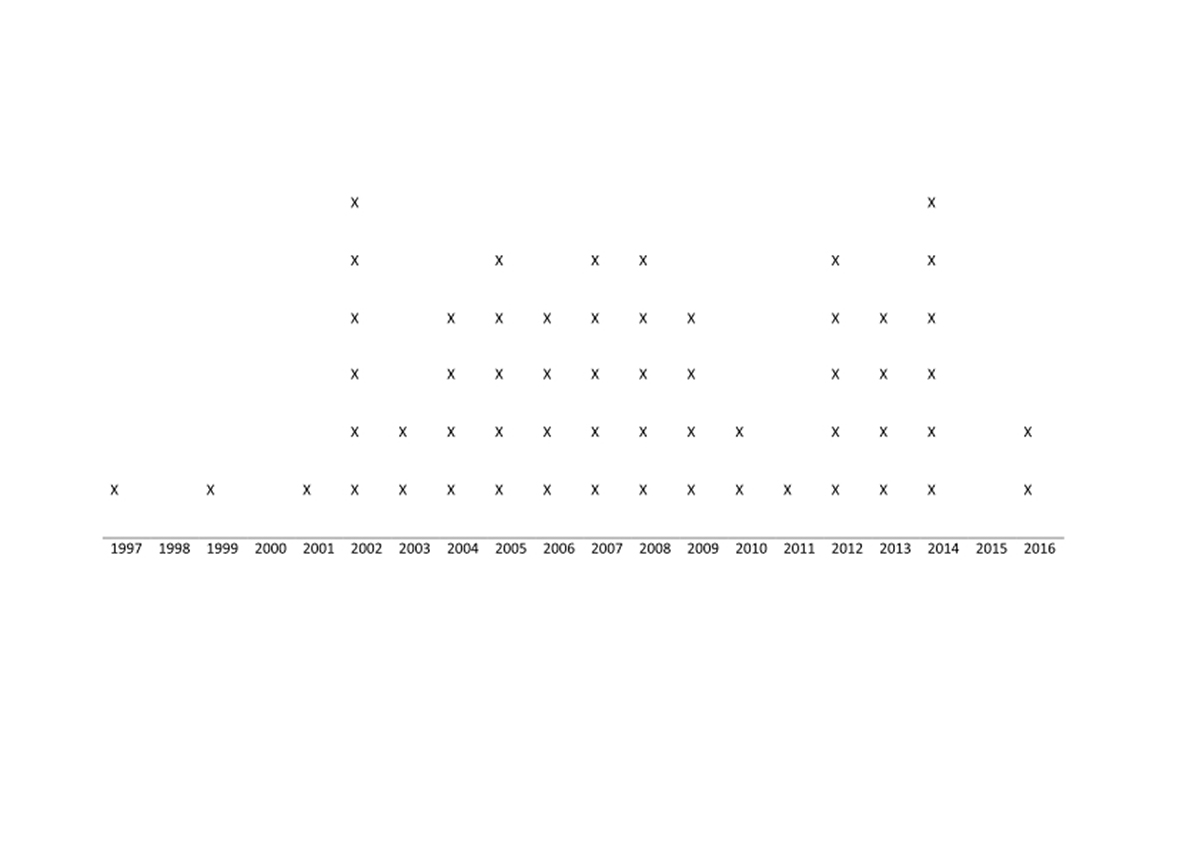
Figure 1 Histogram of number of RealTime reviews per year
The above histogram has a mean yearly number of articles of 3.41 with a standard deviation of 1.77 and is essentially meaningless without knowledge grounded in the way in which RealTime decided on the need for a review from Brisbane and the types of work being shown in Brisbane. Having that knowledge would make the histogram redundant.
To the writing
It begins with email: Greg, would you like to review concert/exhibition/festival, xxx number of words by xxx date for xxx dollars? Sure, I reply. Then I look to see what it is I will be reviewing. Accepting everything recommended gave me the opportunity to see something new, to get out from behind the computer and to escape the tedium of my academic life.
[Aside] I was not always successful getting to a performance — I once missed a one-on-one narrow timeslot of what looked like an interesting piece of installation theatre when I could not get a park within a kilometre or so because there was a community festival on that I had no idea about. Another time I couldn’t even find the venue (semi abandoned shop in a light industrial wasteland) — and I tried hard to find it, so I don’t know who got to see the performance, outside the friends and family set. [/Aside]On the way-more-often-than-not times I made the show I’d sometimes bump into artists and chat, but mostly not. The Brisbane art world is small and many a time I felt a little socially awkward as “the reviewer.” I know some thought I was being standoffish, but it was just embarrassment. Some artists — particularly musician Erik Griswold — were open and chatty. Most are focused on setting themselves up to perform.
Once I was chatting to an artist — not even at one of their shows — and the person I had come with said afterwards, “Wow, they were really sucking up to you.” I had not noticed and still don’t think it true. Only a couple of times did I feel someone was being a bit of a jerk and trying to smarmy up for a review. Shame I was so obtuse, as I might have been able to leverage that to my own advantage if I hadn’t grown up in the old days, before the state-sponsored conflation of self-seeking and What would Jesus do?.
The bell rings and in we go: writing in the dark, notebook on lap, eyes on the stage is an acquired skill. As is the subsequent reading of notes.
First printed review was in RT34, p22, about Sci-Art ’99, which included a work by Adam Donovan (see top image). The event was an offshoot of MAAP 99 (Multi Media Australia Asia Pacific), an adjunct to the Third Asia Pacific Triennial (praise be to the APT). So long ago I could write about the curator: “Paul Brown is the only person I’ve met with a domain name: paul-brown.com.”
And couldn’t help myself with: “Of course soon everything will have a domain name. Then the fridge can tell us there’s a rotten tomato stuck in the frost at the back. A future of inescapable home truths. The phone will ring, ‘Who is it?’…’It’s the fridge’.”
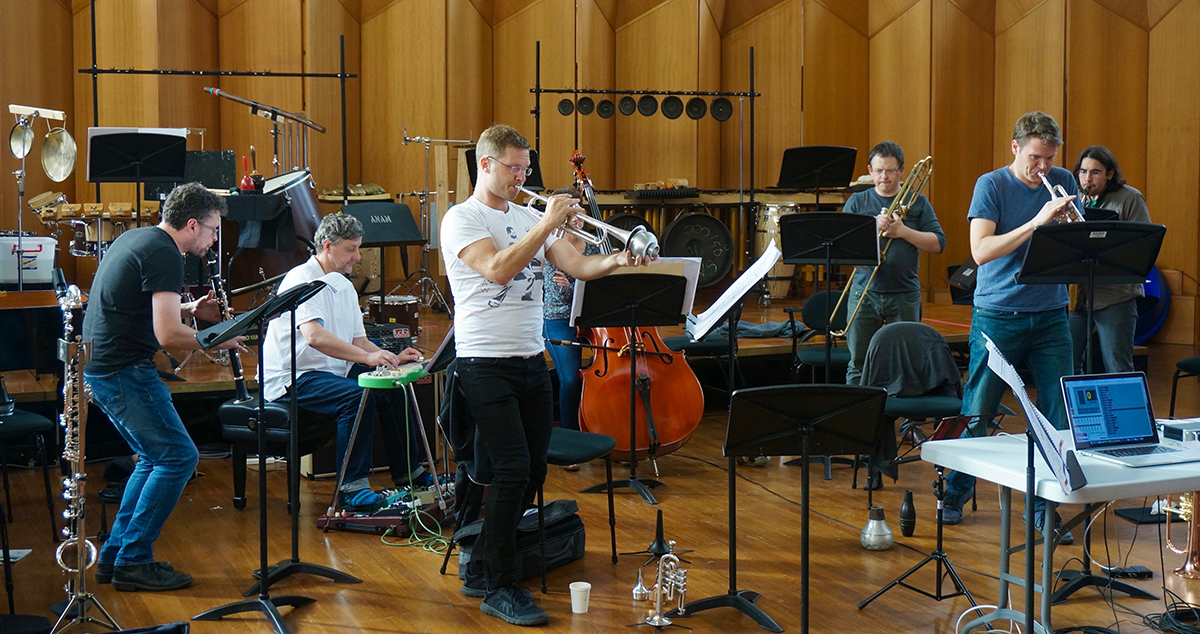
ELISION Ensemble rehearsal, Wreck of Former Boundaries, 2016
A year or two later and I reviewed the contemporary music ensemble ELISION for the first time, in RealTime 49. I was stunned by the virtuosity of the performers, with “a failure rate any machine would envy. It’s easy to get used to the enormous polish that excellent performers have.” — a feeling that has never left me. But I was also critical of a couple of pieces for lacking coherence: “There’s that whole old school avant-garde thing: which of these two random sequences do you prefer? It’s an approach to composition that runs through the entire concert program. From an information/theoretic point of view, there’s a lot of information in random sequences. From a musical point of view, there’s none.”
That’s a view I’ve maintained and is supported by quite a bit of academic research — music plays with the creation of patterns of expectation, it’s probabilistic and if the music is just one thing after another, without any internal or external referencing, there is little probability of it working.
There were a few concerts I did not enjoy. Nothing to do with the style or my taste or a few mistakes but more to do with that artist not respecting the audience’s time. Respect needs to go both ways (the reciprocity/golden rule/civil society thing). I get annoyed taking time to see someone who isn’t trying or presents with contempt (perpetuating the artists-are-so-special trope) or has not done their homework to give credit to those who went before. This is as much to do with curators as artists — curators should weed out the most obvious crap and consult with others where their own expertise is lacking. I find a lot of science/art trite. My medico colleagues would say they did more interesting body work every week — and they did – or ethicists would point out that unnecessary operations in bio-art are unethical as they tie up resources that could go to people who actually need medical care to relieve harsh and overwhelming suffering. Grrrrrrr!
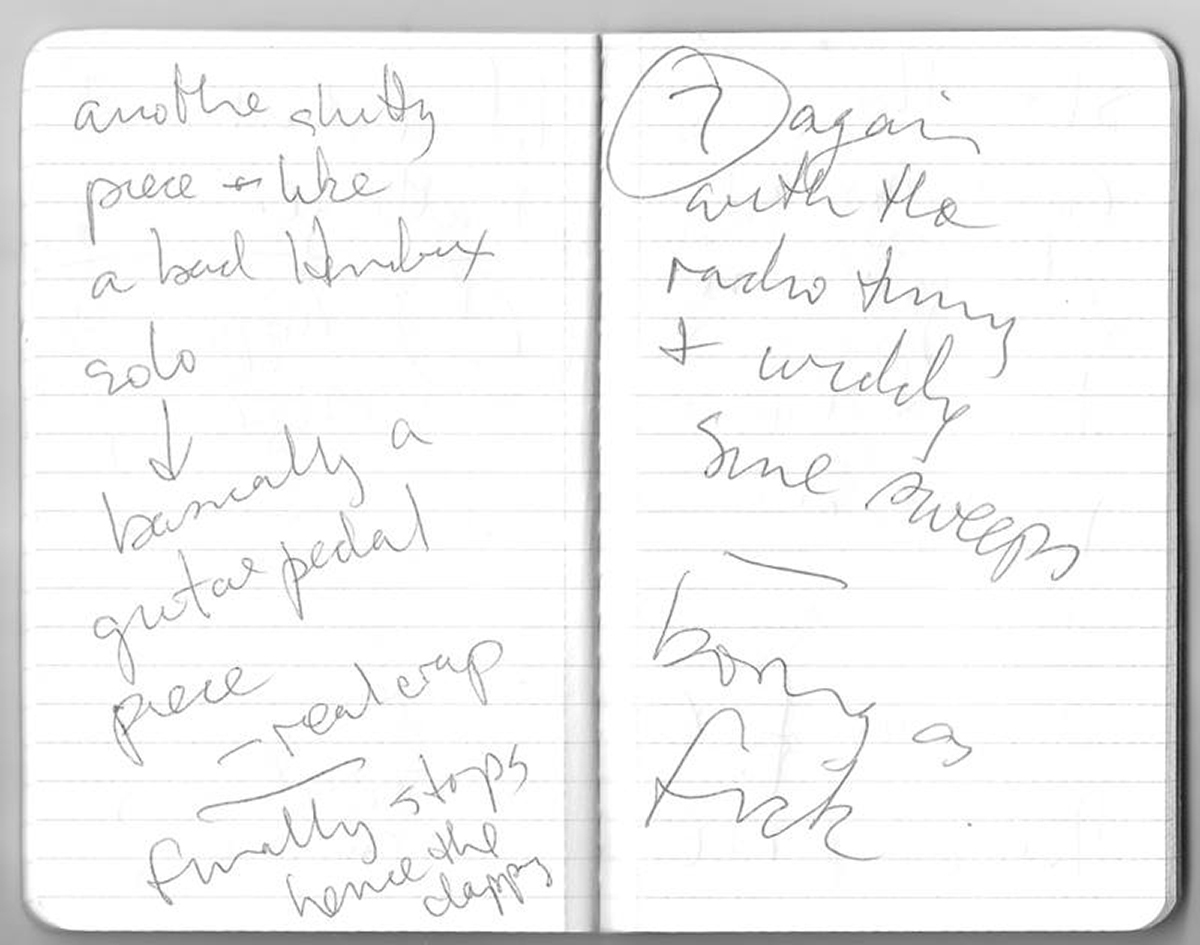
Figure 2. While the artistic intentions may be clear their reception is not always positive.
The critic may respond to a poor performance by writing something critical, avoiding saying much about that particular piece, trying to find something nice to say (perhaps about the venue or the finely tuned motor skills of the performer) or, rarest of all, apologising to the editors for not submitting — perhaps the reviewer left early, fearing the onset of overwhelming fatigue and the ebbing tide of joy.
Overwhelmingly I loved reviewing and the worst thing was not always being able to immerse myself in some astonishing work or other but instead be trying to think of something to note down. “Sometimes reviewing a concert can be a drag — maybe the work is just not that interesting, or the performances not that good and it is hard to think of anything to say. But sometimes reviewing is difficult because the concert is such a pleasure that I really don’t want to be listening-to-write, I just want to sit back and enjoy the unfolding moment. This was that sort of concert.”
By the latter part of my reviewing I was recording concerts so that I could enjoy the moments then go back and listen to the (pretty crappy) recording again as a reminder. Occasionally I revisited video works or borrowed a copy from the gallery to look at at home but I do wish I had thought of recording/revisiting/borrowing earlier. More than that I wish art videos were not restricted to galleries. There are so many wonderful videos that are not out there in the world — not on Vimeo or SBS or the mainly full-of-shit YouTube. But I understand the commercial imperative.
Here’s a joke the artist Richard Bell cracked the other day at the opening of the new Josh Milani Gallery:
“Do you want to hear a joke?” Sure. “Capitalism”
Opening lines
I started every review in the hope that an opening line would fall onto the page with so much momentum the rest would write itself. Never happened but every so often I managed to come up with a decent opener, or even a whole paragraph. This one for the music ensemble Topology in RealTime 51 is probably my favourite.
“Lordy, Lordy, Praise be to Jesus. Cut your throat now life doesn’t get any better than this. Topology. Corridors of Power. Brisbane Powerhouse.”
At the time I was sure it was a reference to Aristides the Just. His two sons had won at the Olympic Games and the crowd called this out. But scanning the net today it seems it refers to Diagoras of Rhodes, a boxing legend of the 5th century BCE, whose fame is so enduring he has both a footy club and an airport terminal named after him. One lucky year two of his three sons won at the Olympics, and he was carried around the stadium on the shoulders of his victorious sons. Someone in the crowd called out “Die, Diagoras; you will not ascend to Olympus besides,” meaning he had hit peak happiness for any and all possible mortals. Diagoras took that wise advice and died on the spot and has evermore been considered the happiest man who ever lived.
And he left a tomb which was worshipped as the resting place of a Holy Man. Until about 40 years ago the locals discovered it was in fact not the tomb of some worthy holier-than-thou but instead the tomb of Diagoras, The Happiest Boxer. Naturally the locals took umbrage and looted the tomb. But the Diagorian contribution to history does not end there. His tomb had an inscription that read “I will be vigilant at the very top so as to ensure that no coward can come and destroy this grave.” A Mighty Oath! But not effective, so now we know there is an upper bound of about 2500 years to the power of a Mighty Oath. Something to keep in mind for the future.
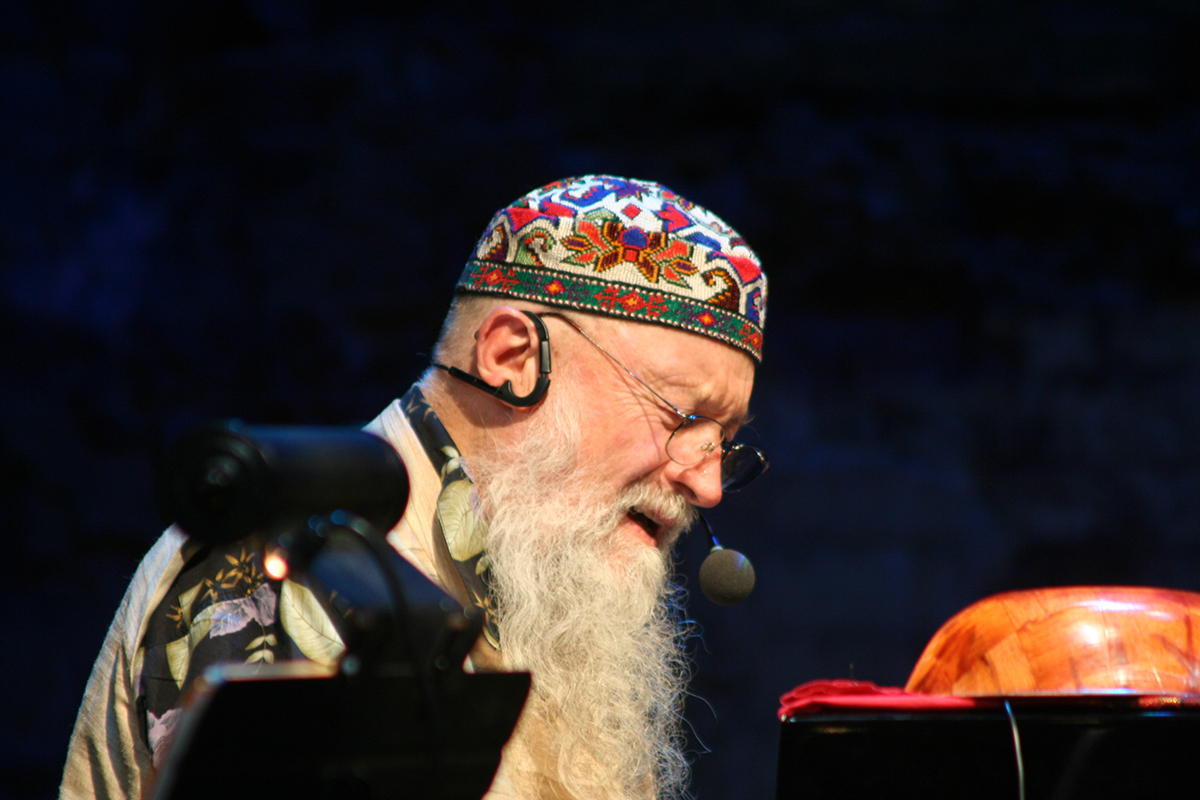
Terry Riley
Another opening
“There’s a certain kind of person who likes to ride in the bulletproof car, look out on the squalor and the roadside lifers, the trash-pile pickers and the sump-oil gleaners and think, that’d be me if I wasn’t so good. Terry Riley is from the other end of the distribution.” Hear and now: Terry Riley in Australia, RealTime 73
This little intro takes me back to my teenage years and going to a school friend’s house for the first and pretty much only time. The place was clean with biblical tracts upon the kidney-shaped timber side tables. Dad was conventionally chubby, bald and glad-handed. Middle manager worked his way up in Sales. Mum was tall with tightly controlled hair, fully buttoned clothing. They’d just got back from the Philippines and anecdoted the story of travelling in limousines through the rubbish dumps filled with children, the streets with distraught beggars. They loved it. Finally they were rich, no longer the ones on the bottom of the pile, surely a sign of God’s grace. They were heading off to church as I arrived and after they left we went in to the kitchen to get a drink. It was the classic kitchen, benches along the walls, cupboards above the benchtops. And all around, shoved between the cupboards above and the benchtops below, was years of kitchen rubbish. Old tins, empty Wheaties packets, wads of stained paper towels, thin hard plastics. Wedged in hard and tight until not a crevice was to be found.
My friend went on to become a junkie, did time, died alone on his remote bush block. His brother became a sniper for the ADF.
More openings
Science & the fear of art, RealTime 60: “Paul Virilio, culture theorist, architect, claustrophobe and asthmatic, sits high on the ridge, communing with the supernatural and looking down on the herd below. He sniffs the wind, scouts the boundaries, stares into a wide open sky that’s blue as the eyes of the white-boy Jesus. ‘They don’t know what’s a-coming,’ he thinks, looking down on the brutes below. ‘There’s poison up ahead’.”
Hybrid reading, RealTime 68: “There’s a standard in detective shows — bring in the Profiler, get inside the criminal’s head, root out that psycho-consciousness. ‘See those bite marks, that misplaced shoe-tree. We’re looking for someone who loves their mother’.”
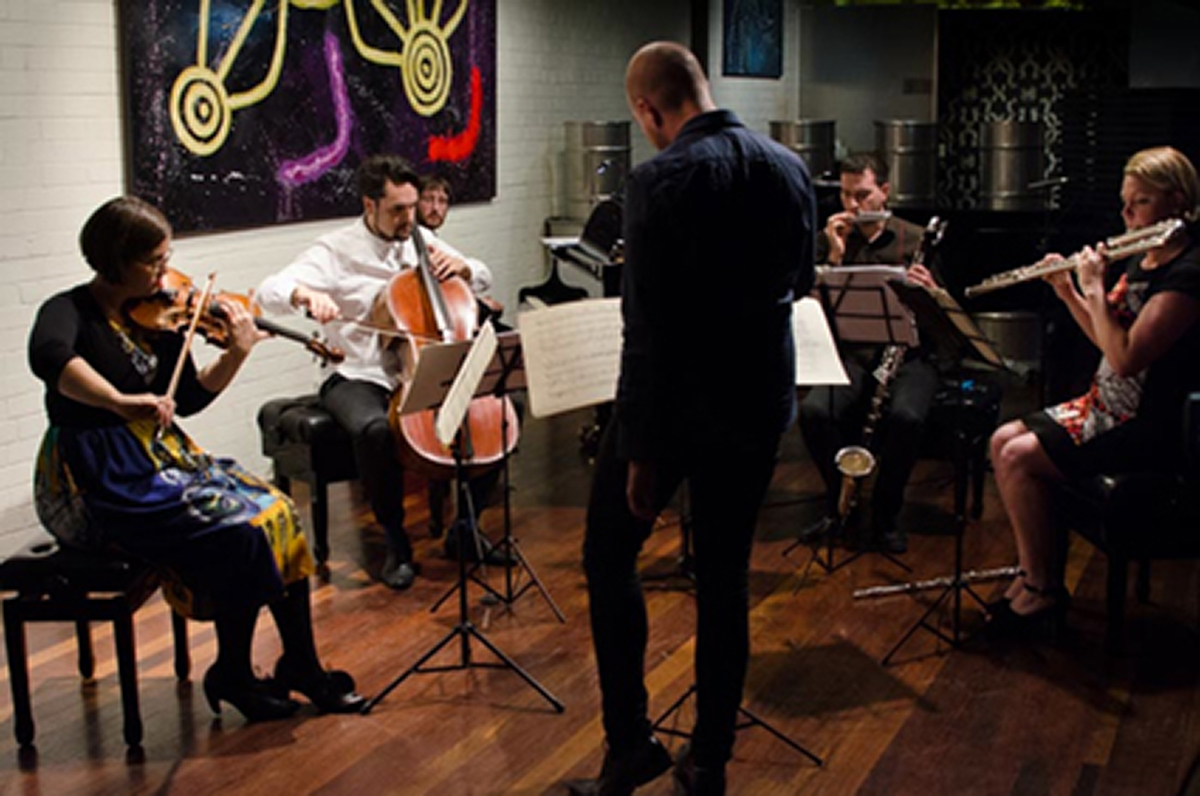
Syzygy Ensemble
Nice Endings
With all the freedom RealTime offered a writer I still missed the boat with a catchy opening more often than not. Which doesn’t segue all that well into….Nice Endings, of which this from a review of a Syzygy concert RealTime 122 is my favourite by far:
“To finish is David Dzubay’s Kukulkan — six short movements programmed around the structure and use of a Mayan temple. Program music can sometimes get a bit stolid and prog rock or sentimental and twee, symbols grinding away as surrogates for far too fraught emotions. I don’t get that with Kukulkan. Instead, there is more of a cinematic wash to each movement. Forbidding piano and spooky clarinet sound like a 30s mystery, dimly lit passageways, a man with a hat, a door opens and the glimpse of a gun. Or next movement and switch to light, joyful 60s and the end of austerity Britain — young love at Oxford, the student and the shopgirl ride through the square and scatter the pigeons, punt along the river, plop down on the grassy bank for that very first kiss. Except it’s Mayan, human sacrifice, hearts held aloft.”
Kukulkan was played in a concert in a coffee shop and had within it much that has been good about the evolution of musical performance in Brisbane — performance as a genuine and natural social occasion. In this case a bit of show-and-tell at the start from two of the performers:
“In the neat preparatory talk, Harrald and Khafagi play us the original tunes Charles Ives used for each of the three movements: ‘Tell me the old, old story,’ ‘Yes, Jesus loves me’ and ‘Shall we gather at the river?’ Performers often introduce pieces with a short description of the composer’s intent or perhaps a formal aspect of the music, but this is perhaps the first time I’ve seen performers actually play examples in their discussion.”
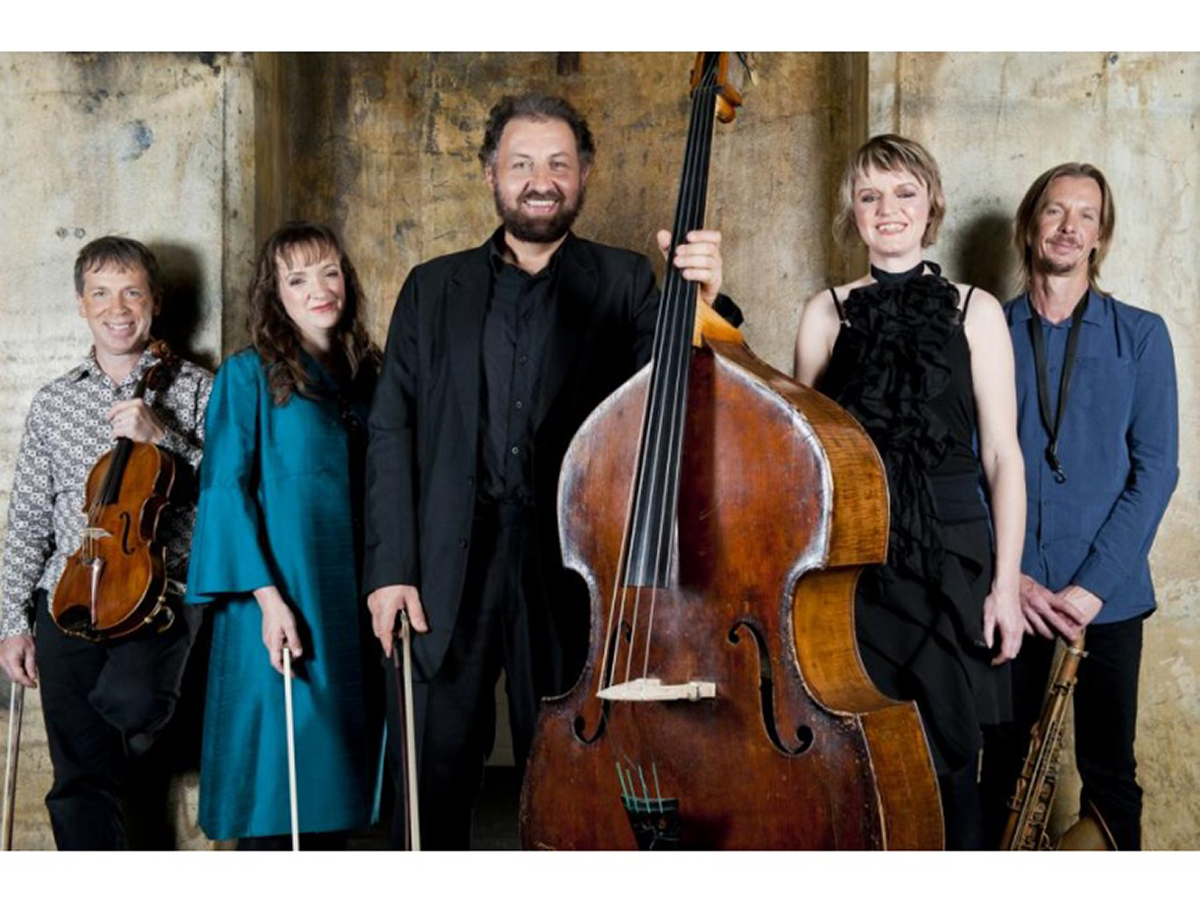
Topology
Topology were big innovators in approachability in Brisbane — Rob Davidson led the way in the first concert of theirs I reviewed: “One of the things I like about Topology is their insistence on communicating with the audience. Their program guides have notes on every piece, and URLs for some of the composers and also for the band. Often one of the performers will speak a little about the piece they are going to play, but chatty, not too Adult-Ed. And because they premiere a lot of works (tonight is no exception) it is often useful.”

Art and Fear, Paul Virilio
Big Themes
Having a science background I could not resist a little Adult-Ed myself, trotting out my thoughts on cognition whenever I found the tiniest crack to jemmy them into. Not so hard to manage in this review of Virilio’s Art and Fear, and Stephen Pinker’s The Blank Slate. Specifically dealing with art and science the entire review is pretty much a personal take on how art works (as well as poking fun at Virilio).
“Virilio senses that the absence of the body in Abstraction leads to the absence of the living body through suicide, and the distorted images of the body in Expressionism encourage the torturer to distort the body of the victim. It’s the slippery slope argument, and for Virilio that slope leads art down into suicide, torture and genocide, so that ‘The slogan of the First Futurist Manifesto…led directly to the shower block of Auschwitz-Birkenau.’ If he is right and art after Impressionism is responsible for all these things one wonders what the causes of suicide, torture, and genocide were during the long years before the 20th century and in populations completely isolated from European art history.”
Pinker is much more reasonable but confuses his taste for a Universal. How many times does this happen (roll eyes and groan — use denial to pretend I don’t do this myself).
“Pinker’s use of behavioural genetics and evolutionary psychology to shed light onto the existence and function of art production and consumption is pretty interesting. But then Pinker goes too far and claims it all went horribly wrong with modernism and postmodernism. Artists stopped pandering to the evolutionary limits of perception and cognition. They stopped going for realism, started painting outside the lines, that jazz don’t swing no more and who can find a tune worth whistling. Besides, art theory is for wankers and nobody listens to the critics anyway. As is common in arguments touting the ‘Once was an age of gold but now is in an age of mud’ theme, there is a whole lot of edited highlights of history going on. Pinker has found a bunch of art that doesn’t communicate to him and then generalised that to elite art doesn’t communicate to anyone worth knowing because elite artists flout evolutionary constraints on communication. He has oozed over from science to taste without noticing the transition.”
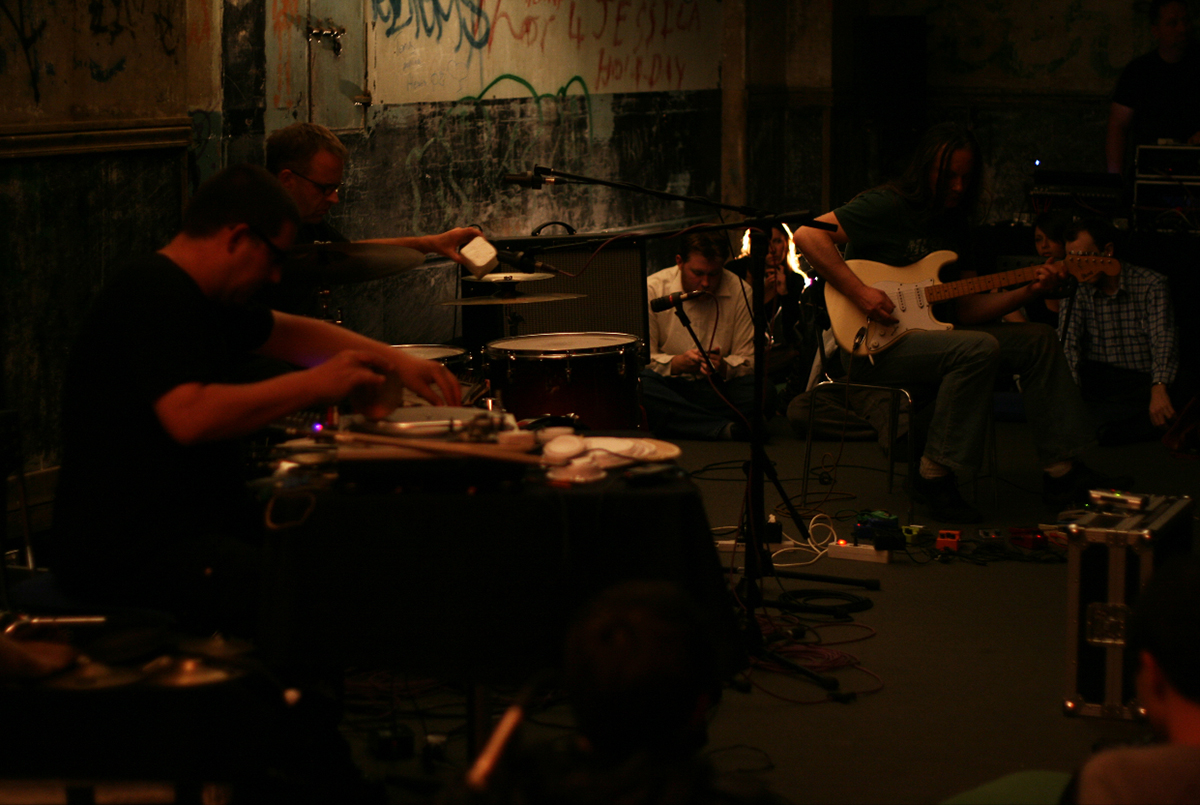
Perlonex, LA 10, Brisbane, 2009 (RT92)
Ethics & loud music
As part of my science/academic career I sat in on/set up/chaired ethics committees and that, plus my association with medicinel got me irked at how loud a lot of concerts were; some performances were way over the threshold for damaging hearing. But I noticed a change starting around 2002, when I introduce another theme that stayed with me across the years: ethics of performance:
“Warning signs plaster the theatre doors ‘This is going to be loud.’ Now I’m a big fan of ethics in performance and don’t see why tissue damage should be a part of the audience experience.”
It gradually improves, in RealTime 92 to venues offering earplugs: “A woman at the front desk asks my son if he wants earplugs. He leans over to me and asks, ‘What sort of concert needs earplugs?’ One that is, at times, far too loud. Maybe at times loud enough to constitute assault and loud enough to contravene appropriate codes of conduct as laid down by somebody somewhere. I don’t know. When it got loud I closed my ears, all the better to hear another day.”
Although I am not sure they were available for Liquid Architecture 13: “but then it gets stupid loud and sensible types in the audience all start shoving fingers in their ears — which would make a nice photo.”
Preamble to The Quick Ending
Staying on topic can be a struggle — not just in reviewing but in conversation and not just in conversation but also in thinking. Which brings me to Star Trek — original and Next Generations where timing was everything. Forty five minutes building up an interesting, seemingly insoluble conundrum, military or ethical, and then suddenly, like a man on the building’s edge, Kirk or Picard or whoever had the chair would look at their watch and go, “Oh my goodness is that the time, we only have five minutes to get this show finished,” and the story would collapse into an heroic and virtuous solution with merest seconds to go before the credits rolled. ” It’s the same with reviewing, although I am not sure why.
The Quick Ending
Margaret McCartney bowed out of her column for the British Medical Journal the other day with a list of “wisdoms”. I’ve always been partial to a one liner myself:
Bentham’s statement of compassion: “The question is not, Can they reason?, nor Can they talk? but, Can they suffer?”
The variously attributed idealism of “There is another world, and it is in this one.”
The consumer materialism of “no deposit, no return” (and the corollary “self-serve”).
The Italian village critique of history and culture “New wave, old water.”
My father’s observation that whilst growing old was no joke, dying young was not appealing either.
And my current favourite for critics, pundits, public intellectuals and personal optimisers everywhere
“If you can’t think of anything nice then don’t think of anything at all.”
–
Top image credit: Phase Inversion, Adam Donovan courtesy the artist






